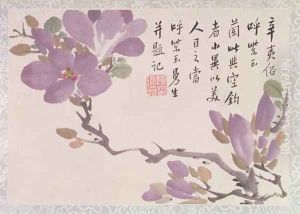Hongshou Chen Paintings
Chen Hongshou was a prominent Chinese painter during the late Ming and early Qing dynasties. His artwork is known for its unique style, combining traditional Chinese techniques with his own innovative approach. Born in Zhuji, Zhejiang province, in 1598, Chen was raised in a time of political turmoil and social change, which influenced his art.
Chen Hongshou's early education was steeped in the classics of Chinese literature and poetry, which had a lasting impact on his artistic themes and style. He was trained in the Zhe School of painting, which was famous for its freehand brushwork, but Chen developed a distinctive style characterized by exaggerated forms, dramatic expressions, and meticulous brushwork. His subjects ranged from figures and portraits to flowers and landscapes.
While Chen's work was not widely recognized during his lifetime, he was respected by his peers and had several notable students. His paintings became more appreciated after his death, and he is now considered a master of the Ming dynasty period. Chen's life coincided with the fall of the Ming dynasty and the rise of the Qing dynasty, which may have contributed to the melancholic and introspective nature of his work.
Chen's art often reflected the literati ideals of his time, emphasizing personal expression and scholarly refinement. He also produced a number of works with a strong sense of satire and social commentary, which have been interpreted as subtle critiques of the political and social issues of his era.
Chen's legacy is preserved in his surviving works, which continue to be studied and admired for their unique blend of traditional and personal elements. His paintings are held in major museums around the world, and he is remembered as one of the most distinctive artists of his time. Chen Hongshou passed away in 1652, leaving behind a body of work that continues to influence Chinese art.
